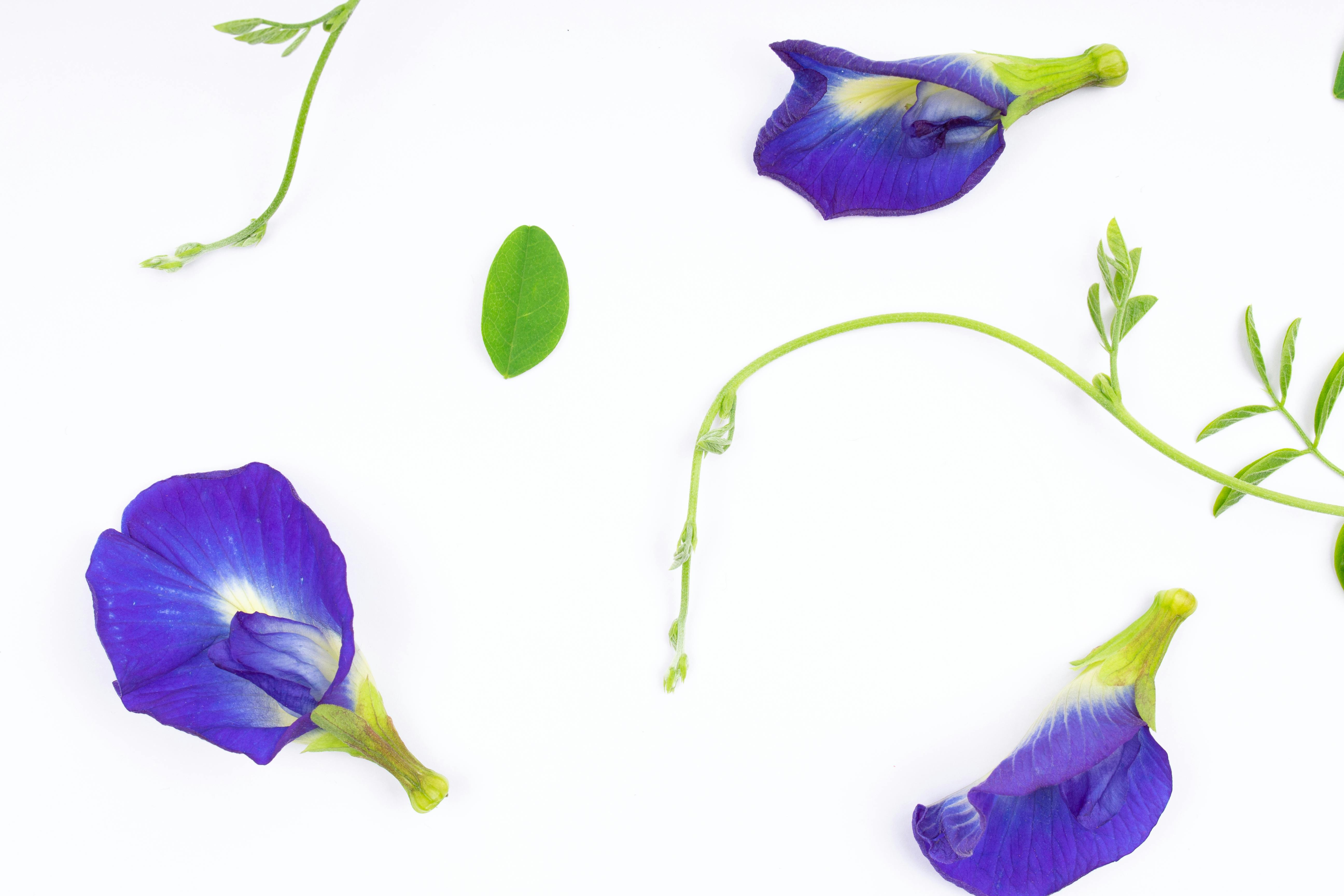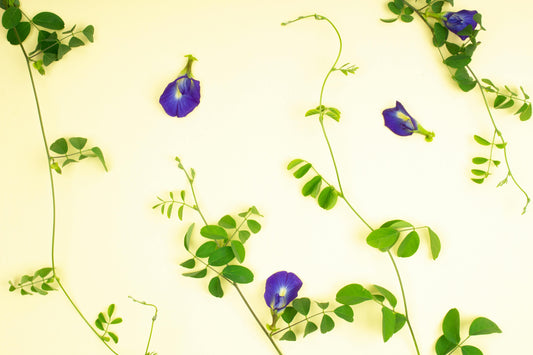
If you've ever scrolled through social media, chances are you’ve come across the stunning blue drinks that have been taking the wellness world by storm. While green matcha has long been a favorite for its vibrant color and health benefits, its cerulean cousin, blue matcha, is quickly gaining popularity. But what exactly is blue matcha, and does it live up to the hype? Let’s dive into this colorful topic and uncover everything you need to know.
What Exactly is Blue Matcha?
To start, let’s clear up any confusion. Despite its name, blue matcha isn’t related to green matcha at all. Instead, it’s derived from the flower of the butterfly pea plant (Clitoria ternatea), which gives it its striking indigo hue, as explained in an overview provided by scientific research.
Registered dietitian Natalie Romito explains, “Blue matcha is typically sold as a powder, though you might also find it in tea form. It’s very different from green matcha, but since they’re consumed similarly—like in lattes or smoothies—it probably got its name because of that overlap.”
But here’s where things get really interesting: blue matcha isn’t just a static shade of blue. When exposed to acidic ingredients like lemon juice or vinegar, it transforms into shades of purple or pink. This magical transformation happens thanks to anthocyanins, the pigments responsible for the vibrant colors in many fruits and vegetables.
Imagine whipping up a smoothie with blue matcha and watching it shift from electric blue to soft lavender as you add a splash of lime juice. Not only is it fun to experiment with, but it also makes for some seriously Instagram-worthy photos!
Health Benefits of Blue Matcha
Now that we’ve covered what blue matcha is, let’s talk about why people are raving about it. Here are some key reasons why this colorful ingredient might be worth adding to your diet:
1. Caffeine-Free Bliss
Unlike green matcha, which contains caffeine and can give you an energy boost, blue matcha is completely caffeine-free. This makes it a great option if you're sensitive to caffeine or prefer to avoid it altogether. Whether you're winding down in the evening or simply want a refreshing drink without the jitters, blue matcha fits the bill perfectly.
2. Packed with Anthocyanins
Anthocyanins are powerful antioxidants found in foods like blueberries, cherries, and even eggplant. These compounds are what give blue matcha its deep blue color—and they may offer a range of health benefits.

Tamanna Rumee // Pexels
While research on anthocyanins is ongoing, studies suggest they could play a role in reducing inflammation, improving heart health, supporting brain function, and even lowering the risk of certain diseases. However, it’s important to remember that blue matcha isn’t a magic bullet. As Romito emphasizes, “It works the same way as other foods rich in anthocyanins. There’s no evidence that blue matcha provides better benefits than eating blueberries or purple sweet potatoes. Variety is key!”
3. Potential Blood Sugar Benefits (With Caveats)
You might have seen claims that blue matcha can help regulate blood sugar levels. While there’s some promising research in this area, it’s important to approach these claims with caution. One animal study demonstrated that compounds in the butterfly pea plant could potentially lower blood sugar levels. However, similar effects haven’t been proven in humans yet.
Romito advises, “If you’re managing diabetes or taking medications that affect your blood sugar, it’s crucial to talk to your doctor before regularly consuming blue matcha. We don’t want to create unnecessary complications.”
4. Other Claims: Proceed with Caution
Some sources claim that blue matcha can aid in wound healing or improve cholesterol levels. However, Romito warns that these benefits likely come from other parts of the butterfly pea plant, such as the roots or seeds, rather than the flowers used to make blue matcha. Additionally, traditional Ayurvedic medicine often uses the white variety of the butterfly pea plant rather than the blue one.
In short, while blue matcha is certainly intriguing, it’s best not to rely on it as a cure-all. Instead, think of it as a fun and colorful addition to a balanced diet.
Are There Any Risks or Side Effects?
For most people, blue matcha is safe to consume in moderation. However, there are a few considerations to keep in mind:
- Allergies: If you have allergies to flowers, you might want to proceed cautiously with blue matcha. Start with small amounts to see how your body reacts.
- Overconsumption: As with anything, too much of a good thing can be bad. Stick to one serving per day to avoid potential digestive issues like nausea.
Romito reassures us, “If you notice any discomfort after drinking blue matcha, don’t worry—you can always switch to other sources of anthocyanins, like blueberries or red cabbage. They’ll provide similar health benefits without the side effects.”
How to Incorporate Blue Matcha Into Your Diet
Ready to give blue matcha a try? Here are some creative ways to enjoy this versatile ingredient:
1. Beverages
The most popular use for blue matcha is in drinks. Try blending it into smoothies, mixing it into lattes, or using it to create eye-catching cocktails. Since it has a mild flavor compared to green matcha, it pairs well with a variety of ingredients.
Pro tip: Make sure to whisk the powder thoroughly into your liquid to ensure an even distribution of color and taste.
2. Baking
Feeling adventurous? Experiment with blue matcha in baked goods like cookies, muffins, or pancakes. Its natural dye properties can turn ordinary treats into something extraordinary.
3. Savory Dishes
Don’t limit yourself to sweet recipes! You can also incorporate blue matcha into savory dishes like pasta sauces or rice bowls. Just imagine the visual impact of vibrant blue grains paired with fresh veggies.
Remember, the possibilities are endless when it comes to cooking with blue matcha. Get creative and have fun exploring its unique qualities!
Final Thoughts
Adding blue matcha to your routine can bring both visual excitement and potential health benefits to your meals. However, it’s essential to view it as part of a diverse diet rather than a standalone solution. By including a variety of colorful fruits and vegetables alongside blue matcha, you’ll maximize your intake of beneficial nutrients.
So go ahead and embrace the beauty of blue matcha—but don’t forget to keep enjoying those blueberries, beets, and grapes too. After all, variety is the spice of life—and the secret to good nutrition!




